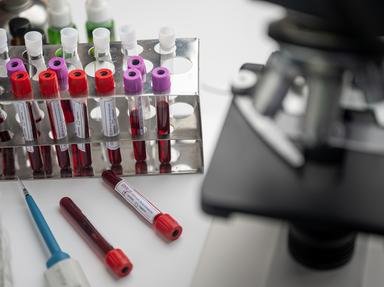Quiz Answer Key and Fun Facts
1. Our first amino acid is the simplest of the twenty encoded by our genome and is the only amino acid that is achiral. What is its name?
2. This amino acid's name sounds very similar to a molecule involved in the inflammatory response and can be metabolised in our bodies to form this molecule. What is the name of this amino acid?
3. Which amino acid, whose R group is shaped like an upside-down "V", is this?
4. Which amino acid, designated by the single letter code K, is this?
5. Designated by the single-letter code W, what is this amino acid?
6. This lucky amino acid is coded for by what is known as the "start codon". What is its name?
7. This amino acid gives its name to a class of receptors that are prominent in the brain. What is it called?
8. This amino acid was originally isolated from cheese and so takes its name from the Greek word for "cheese". What is it called?
9. This amino acid is released in muscles during exercise and can be used to generate glucose in the liver. What is its name?
10. This cyclic amino acid is the only standard amino acid that is not a primary amine. What is its name?
11. This basic amino acid is used in our bodies to synthesise nitric oxide. What is its name?
12. This amino acid was the last of the standard twenty to be discovered. What is its name?
13. Which amino acid, which is an isomer of another amino acid, is this?
14. Which amino acid, which features a phenyl group, is this?
15. Which amino acid, the name of which sounds like a famous chapel, is this?
16. This amino acid is designated by the letter N, and is named for a common vegetable. What is its name?
17. Which amino acid, originally isolated from silk, is this?
18. Which amino acid, designated by the letter D, is this?
19. Which hydrophobic amino acid, which is implicated in Maple Syrup Urine disease, is this?
20. This amino acid is important in the management of ammonia in our bodies. What is it called?
Source: Author
doublemm
This quiz was reviewed by FunTrivia editor
WesleyCrusher before going online.
Any errors found in FunTrivia content are routinely corrected through our feedback system.

